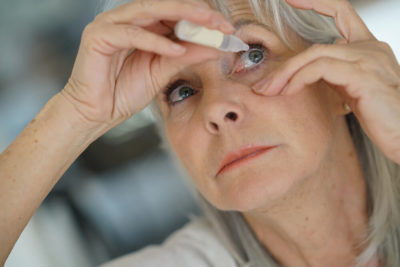 When deciding on a treatment option, your Honolulu eye surgeon will take into account the unique aspects of each person’s case, including severity of the disease, response to medication and other health issues.
When deciding on a treatment option, your Honolulu eye surgeon will take into account the unique aspects of each person’s case, including severity of the disease, response to medication and other health issues.
Eye Drops
The most common treatments for glaucoma are eye drops. There are a number of different categories of eye drops, but all are used to either decrease the amount fluid in the eye or improve its outward flow. Sometimes doctors will prescribe a combination of eye drops. People using these medications should be aware of their purpose and potential side effects. Your doctor will decide which medications are best suited for each patient based on the individual case of glaucoma, medical history and current medication regimen.
Laser Surgery
Trabeculoplasty is often used to treat open-angle glaucoma. In argon laser trabeculoplasty (ALT), a high-energy laser is aimed at the trabecular meshwork to open areas in these clogged canals. These openings allow fluid to bypass drainage canals and flow out of the eye. In selective laser trabeculoplasty (SLT) a low-energy laser treats specific cells in the trabecular meshwork. Because it affects only certain cells without causing collateral tissue damage, SLT can potentially be repeated.
Laser peripheral iridotomy (LPI) is frequently used to treat closed-angle glaucoma, in which the angle between the iris and the cornea is too small and blocks fluid flow out of the eye. In LPI, a laser creates a small hole in the iris to allow fluid drainage.
Cyclophotocoagulation is usually used to treat more aggressive or advanced open-angle glaucoma that has not responded to other therapies. A laser is directed through the sclera or endoscopically at the eye fluid-producing ciliary body. This helps decrease the production of fluid and lower eye pressure. Multiple treatments are often required.
Currently, laser surgery is the most frequently used procedure to treat glaucoma. It normally lowers eye pressure, but the length of time that pressure remains low depends on many factors, including age of the patient, the type of glaucoma and other medical conditions that may be present. In many cases, continued medication is necessary, but potentially in lower amounts.





